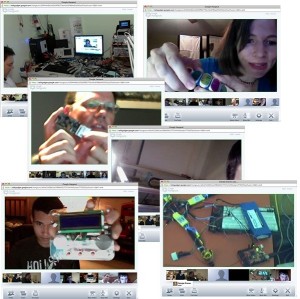As more people join Google's new social network, Google+, they're figuring out how to take advantage of some of the innovative uses for the site.
One obvious use for educators is to boost their personal and professional network, particularly as the service offers more granular controls for privacy and sharing. Within these Circles, as each designated group is called, educators and students can create discussion groups without having to worry about the awkward or troubling "friend" or "follower" relationships that come with Facebook and Twitter.
But beyond that, Google Hangouts opens up another realm of possibilities for educators.
Google Hangouts allows up to 10 people to video chat with one another. Hangouts are free and easy to use (once you download and install a browser plug-in, you're all set). You can invite specific people to join a Hangout with you, although it's worth noting that anyone who joins can in turn share the Hangout's URL and invite others. As being in a Hangout appears in all the participants' Streams, it does mean that these are public gatherings.
Google's Hangout technology recognizes who is speaking during a session and that person's image takes the "big screen" while other participants appear in small tiles below. In other words, there's no squinting or tracking to try to figure out where the voice in the video conference is coming from.


